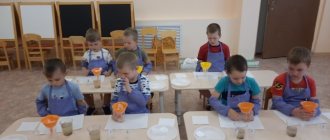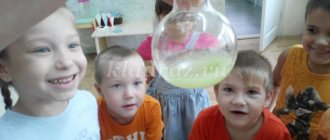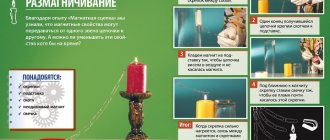What could be the topics of children's research?
All the endless variety of topics for children’s research work can be roughly divided into three main groups:
• FANTASTIC - themes focused on the development of non-existent, fantastic objects and phenomena.
For example, a child makes a project for a spaceship, creates some kind of magical machine or device. All this can be created only in a verbal version, or it can be embodied in a technical drawing or even a layout glued together from paper, assembled from cardboard boxes, food or cosmetics packaging.
• EMPIRICAL - topics that are closely related to practice and involve conducting your own observations and experiments.
This is the most interesting and promising area of children's research activities. Conducting research that involves one's own observations and experiments is very valuable in terms of developing investigative behavior itself and in terms of acquiring new information about the world. These studies require a lot of ingenuity. Almost all objects can act as subjects of children's observations and experiments: people themselves,
and domestic animals, and natural phenomena, and a variety of inanimate objects.
For example, third-graders from experimental gymnasium No. 1882 in Moscow for a long time could not choose a topic for their own research. And when, in despair, they turned to a psychologist, he simply limited himself to advice to be more observant. The girls took the advice literally, and the result of their observations was a wonderful work, which they later called: “The Book of Records for Our Class.” After observing their classmates, they determined who was the “best” in which area. Someone, thus, turned out to be the most “sporty”, someone the most “fashionable”, someone the “best football player”, and someone the “best mathematician”, someone read the fastest, and someone better sang to everyone. Each had its own definition, because each, according to researchers, turned out to be remarkable in some particular area.
• THEORETICAL - topics focused on the study and synthesis of facts and materials contained in various theoretical sources. This is what you can ask other people, this is what you can see in films or read in books, etc.
Currently, many very good encyclopedias and reference books are being published for children of all ages. This creates excellent conditions for conducting theoretical research even with children of primary school age.
For example, you can collect information in various reference books and encyclopedias about a certain group of dog breeds, the design of sailing ships of past centuries, the history of musical instruments or the development of computer technology, etc. By summarizing this information, you can find interesting patterns that are invisible to a superficial glance. Having structured the data obtained, you can present the identified information for discussion among a group of peers.
Of all research paper topics, theoretical ones are the most difficult. Typically, such topics can and love to be developed by younger schoolchildren who are included in the category of gifted children. Here, the child is required to have an interest in analysis and synthesis, the ability to classify and categorize, a love of judgment and inference; for success in this work, well-developed associative thinking and intuition are required.
If theoretical research is the domain of predominantly gifted children, then all children are very willing to conduct empirical research, and many are interested in fantasizing and inventing something unusual. •
Rules for choosing a topic
Here are some general comments regarding the choice of research topic. When developing them, we followed our own practice and conditionally call the highlighted rules “Rules for choosing a research topic.”
• The topic should be interesting to the child and should captivate him. Research work, like any creativity, is possible and effective only on a voluntary basis. The desire to explore something arises when the object attracts, surprises, or arouses interest. A topic imposed on a child, no matter how important it may seem to us adults, will not give the desired effect. Naturally, in order to choose a topic that interests a child, you need to know his interests and inclinations. To be able to hear, understand, and feel his interests is a difficult, but completely solvable pedagogical task.
• The topic must be feasible and its solution must bring real benefits to the research participants. Bringing a child under the idea in which he is maximally realized as a researcher, reveals the best sides of his intellect, and acquires new useful knowledge, skills and abilities is a difficult task, but without solving it, this work loses its meaning.
At first glance it may seem that this rule contradicts the first. In fact, the “ideal” topic for every child at a given moment in his development is a result that is on the border between the first and second rules. The art of an adult in carrying out this work is to help the child make a choice that he would consider his own.
• The topic must be original, it must have an element of surprise and unusualness. Knowledge begins with surprise, and people are surprised by something unexpected. Originality in this case should be understood not only as the ability to find something unusual, but also as the ability to look outside the box at traditional, familiar objects and phenomena.
This rule is aimed at developing the most important characteristic of a creative person - the ability to see problems. The ability to find unusual, original points of view on various, including well-known objects and phenomena, distinguishes a true creator from a mediocre, creatively undeveloped person.
• The topic should be such that the work can be completed relatively quickly. The ability to concentrate for a long time
The child’s attention to one object is low. It is usually very difficult for him to work purposefully in one direction for a long time.
Therefore, we often observe that work that was started with enthusiasm and not immediately completed (drawing, construction, etc.) remains unfinished. It is practically very difficult to carry out research “in one go.” Taking into account this feature of children's nature, one should strive to ensure that the first research experiments do not require a long time.
In addition, when choosing a topic, you need to consider:
— Possible level of solution.
Naturally, the problem should correspond to the age characteristics of the children. This position usually concerns not so much the choice of problem as the level of its presentation, meaning its formulation and selection of material for solution. The same problem can be solved by children of different ages at different stages of education in different ways, with varying degrees of depth.
— Desires and possibilities.
When choosing a problem, you need to consider whether there are the tools and materials necessary to solve it. The lack of literature, the necessary “research base,” and the inability to collect the necessary data usually lead to a superficial solution. A superficial solution gives rise to “idle talk.” And this not only does not contribute, but, on the contrary, significantly hinders the development of creative thinking based on evidence-based research and reliable knowledge.
When helping a student choose a topic, try to stay closer to the area in which you yourself feel gifted. Research work is done by the child together with the teacher, so the topic should be of interest not only to the student, but also to the teacher. In order to maintain this interest, you must try to orient children to what is interesting to you, what arouses your interest, to what you yourself are well versed in.
I would especially like to emphasize that a teacher should also feel like a researcher. A teacher working in the traditional reproductive mode is convinced that you cannot teach a child what you yourself do not know. All this looks fundamentally different in research-based learning. By exploring a problem with a child, you can acquire knowledge together with him, by helping each other, we can discover new horizons for ourselves. This is one of the most effective ways to learn creativity.
MAGAZINE Preschooler.RF
“Children’s scientific and practical conference is an effective form of educational activity for the formation of prerequisites for the educational activities of older preschoolers”The report was prepared by:
- Maryasova Tatyana Georgievna, teacher of MBDOU "TsRR - d/s "Raduga"
- Bautina Elena Aleksandrovna, teacher of the MBDOU "CRR - d/s "Rainbow"
We would like to present to your attention the experience of our group in organizing a children's scientific and practical conference for older preschoolers.
A situation arises when first-graders have a large stock of knowledge and skills, but are not ready for educational activities. For the development of educational activity, its prerequisites must be formed in preschool age. It is for this reason that many kindergartens are focused on finding new forms and methods of work to create the prerequisites for educational activities. In our opinion, one of such promising forms is a scientific-practical conference.
In our kindergarten, the final event was a scientific and practical conference.
Topics of our conferences: “Our smaller friends” , “Indoor plants are our friends” , “Mysterious space” , etc.
Goal: creating conditions for the formation of prerequisites for educational activities through children's scientific and practical conferences.
Objectives of the Conference:
— creating conditions for self-realization for children of senior preschool age.
— creating conditions for scientific communication and developing public speaking skills.
— develop grammatically correct dialogical and monologue speech of children during the presentation of their project.
— to develop in children the ability to listen to each other and empathize.
— involve parents in the educational process of kindergarten on the basis of joint cognitive and research activities with children and teachers.
As part of the preparation, specialists and educators of the preschool educational institution drew up a scenario for the conference. Information about the date and location of the scientific and practical conference was posted in the corner for parents. The preparation of the reports was carried out by the students themselves and their parents, who received the status of scientific supervisors. They collected research material together with educators, who, as conference organizers, controlled the process of collecting abstracts for the conference.
The first conferences were a great challenge for us; we did not believe in our strengths, in the capabilities of preschoolers, we believed that this was not a form of work that was close and understandable to preschool children, and we were worried. Only active children capable of public speaking were selected to participate. Each time the participants in such conferences became more and more diverse, the children consciously carried out experiments, research and abstract reports.
Each presentation was fascinating, educational, interesting, containing facts from the life of animals, plants, and mysteries of space that were still unknown to children, to which relevant research was devoted. Parents and children used various forms of presenting messages: poetic form, question-answer, description, discussion with the audience, presentations.
Despite the fact that the time allotted for each participant to speak was 3-5 minutes, the excitement of the participants was obvious. Therefore, in order to relieve tension in the breaks between “scientific messages,” the parents of the participants conducted didactic games and relay races with their children.
During the final stage, the results of the conference were summed up. The results were summed up by the jury, which included the head of the MBDOU, the deputy head of the MBDOU and the chairman of the parent committee of the group.
Based on the results of the conference, all participants were awarded diplomas of various degrees.
Thus, the active use of this form of educational activity with preschoolers made it possible to form the prerequisites for educational activity in children. Pupils are active and inquisitive, show initiative and independence, are able to analyze, compare and generalize, and establish cause and effect relationships. Children accept the task assigned to them, think through and find not only ways of action to solve it, but also options for their implementation. Pupils subordinate their actions to the rule and know how to interact with each other.
We consider this form of teamwork to be effective and recommend using it in working with children of older preschool age and their parents.
| Next > |
Scientific and practical conference for preschoolers
Research activities at preschool educational institutions
Scientific and practical conference for preschoolers “Little Explorers”
Good evening! The school year has ended, and it’s time to sum up the results. I would like to present to your attention the experience of our kindergarten in organizing the research activities of older preschoolers. The modern world is dynamic and multifaceted. Everything that happens in it changes with kaleidoscopic speed, and now the life of a modern kindergarten is unthinkable without serious reliance on scientific achievements in the field of pedagogy, without the introduction of new technologies. One of these innovative technologies is children's research activities. Project activities help modern educators make their first children's discoveries. The content of project activities helps teachers select development tasks, and on the other hand, take into account the current interests of children. The result of the construction of the pedagogical process in our kindergarten was, on the one hand, greater interest in the cognitive development of pupils, and on the other hand, it aroused the desire of children to acquire knowledge on their own. The method of project activity, which is currently innovative for preschool institutions
Participants to a scientific and practical conference with their “scientific supervisors” Research activities in our kindergarten have long been included in the system of working with children, and some experience has already been accumulated. To carry out work using the project method, we use a variety of forms and methods, which allows us to involve all participants in educational relations in kindergarten. It has become a good tradition to hold various competitions for little researchers: “Scientists in diapers”, “I want to know everything!” the festival of child and parent projects “My Family is My Team”, the work of the “Knowledge” club has gained good fame, and at the end of February the 1st conference of the kindergarten “Little Explorers” was held in the kindergarten. The children's conference was attended by older children attending our educational institution. What did the little researchers learn? together with your parents and teachers in the process of your first discoveries? The topics of their research projects were very diverse. The boys talked about what new things they learned about cars and that. what you need to do to be healthy, and girls, of course. about dolls and sweets and fruits
Dasha presents her project. The presentation of children's projects took place in an atmosphere of positive communication, where each child felt his importance and the importance of his first discoveries. All your discoveries. so important for a small child, they performed under the guidance of their teachers and parents
How important it is to be healthy. Egor claims. on-site experience. Those who play sports will inflate the balloon in 5 exhalations, and those who don’t……. All little researchers were awarded medals of varying degrees, diplomas and gifts!
We recommend watching:
Project in the senior group of a kindergarten Project in the senior group on the topic “Trees and shrubs in spring” Practice-oriented project for landscaping the territory of a kindergarten Educational project. Second junior group
Similar articles:
Educational and creative project on the theme “Golden Autumn”. Junior group
Project for children of the senior group “Our cheerful garden”
Development of communication skills in design and research activities in preschoolers
Report “Cognitive development of preschool children in the context of the implementation of the Federal State Educational Standard for Education”
Cognitive development of children is one of the important areas in working with preschool children. A child is born with an innate cognitive orientation that helps him adapt to new conditions of his life. Gradually, cognitive orientation develops into cognitive activity - a state of internal readiness for cognitive activity, manifested in children in search actions aimed at obtaining new impressions about the world around them. As the child grows and develops, his cognitive activity increasingly begins to gravitate towards cognitive activity.
The cognitive development of a preschool child as an evolutionary process goes through several stages: curiosity, inquisitiveness, the stage of development of cognitive interest, the stage of development of cognitive activity, which move from lower to higher in the joint activity of a significant adult and a child.
So, at the stage of curiosity
The preschooler is content with only the initial orientation associated with the interestingness, brightness, and unusualness of the object itself.
Curiosity
represents a valuable state of the individual, an active vision of the world, characterized by the desire of a preschool child to penetrate beyond the boundaries of what was initially seen and perceived. At this stage, strong emotions of surprise, joy of learning, delight, and satisfaction with the activity are manifested.
A new quality of cognitive development of preschool children is cognitive interest.
, characterized by increased stability, clear selective focus on a cognizable object, valuable motivation in which cognitive motives occupy the main place; cognitive interest contributes to the preschooler’s penetration into essential relationships, connections, and patterns of mastering reality.
cognitive activity to be a high level of cognitive development of preschool children
, the basis for the development of which is the holistic act of cognitive activity.
The source of cognitive activity is the cognitive need
, and the process of satisfying this need is carried out as a search aimed at identifying, discovering the unknown and assimilating it.
As recommended types of activities that ensure the cognitive development of preschool children, we highlight:
– organization of solving cognitive problems;
– the use of experimentation in the work of subsidiaries;
– use of design.
When working with preschoolers, cognitive tasks are used,
which are understood as educational tasks that presuppose the presence of search knowledge, methods (skills) and stimulation of the active use of connections, relationships, and evidence in learning. A system of cognitive tasks accompanies the entire learning process, which consists of sequential activities that gradually become more complex in content and methods.
Examples of cognitive tasks may include the following:
Inanimate nature
: Why do tree branches sway? Why are there puddles on the ground? Why is the water frozen outside? Why does snow melt indoors? Why is snow sticky? Why does it rain in summer and spring, and snow in winter? Why does the soil thaw by noon in the spring and freeze by evening? etc.
Live nature
: can plants grow without light (moisture, heat)?
Why do plants grow quickly in spring? Why do plants wither, turn yellow, and lose leaves in the fall? Why is cactus rarely watered, but balsam often? Why do fish swim? etc. After the children accept the cognitive task, under the guidance of the teacher, it is analyzed: identifying the known and the unknown. As a result of the analysis, children make assumptions about the possible course of a natural phenomenon and its causes. Their assumptions are right and wrong, often contradictory. The teacher must listen and take into account all assumptions
and pay attention to their inconsistency. If the children do not put forward any ideas, the teacher himself should put them forward.
A relevant method of cognitive development of preschool children is experimentation,
which is considered as a practical activity of a search nature, aimed at understanding the properties, qualities of objects and materials, connections and dependencies of phenomena.
In experimentation, the preschooler acts as a researcher who independently and actively explores the world around him, using various forms of influence on it. In the process of experimentation, the child masters the position of the subject of cognition and activity.
We offer the following experiments as examples.
1. “Does water have taste?”
2. “What objects can float?”
3. “Where did the ink go?”
Effective methods of cognitive development of preschoolers include project activities that ensure the development of children’s cognitive interests, the ability to independently construct their knowledge and navigate the information space, and the development of critical thinking.
Our projects:
“Autumn World”, Blue Drop”, “Our Good Tales”
"Magic Sand"
It should be remembered that the Federal State Standard considers the formation of a child’s cognitive interests and cognitive actions in various types of activities to be one of the principles of preschool education.
In Object activity, children learn such properties as color, shape, surface character, weight, location in space, temperature, etc. This activity helps children solve the problem through trial and error, i.e. with the help of visual and effective thinking. In Experimenting with sand, water, dough, etc. properties hidden at first glance are revealed: water flows, it is wet, objects sink or float in it….
From Communication with adults, children learn a huge amount of necessary information: the names of objects, actions, properties, the attitude of adults to everything around them. Joint games with peers under the guidance of adults allow children to apply the knowledge and skills acquired earlier. Self-care and actions with household objects-tools enrich children's sensory experience, create conditions for the development of visual and effective thinking, develop small muscles, which has a beneficial effect on the formation of the frontal lobes of the children's brain.
Poems, fairy tales, songs not only provide emotional pleasure, but also enrich children’s ideas about the world, taking it beyond the limits of the directly perceived.
Looking at pictures helps enrich sensory experience and develop visual-figurative thinking.
Motor activity, to a lesser extent, but also affects the cognitive development of children. Firstly, it relieves stress, and in addition, here children receive a lot of information about their own body, its capabilities, in outdoor games they learn to understand - bunnies jump, foxes run, a bear waddles from side to side, etc.
In preschool age, play comes first in importance among the types of activities in which cognitive development occurs.
The main types of games are role-playing, directing, theatrical, because in these games the child’s desire for independence and active participation in the life of adults is satisfied. A game for a preschooler performs the same function as a textbook for schoolchildren; it helps to understand what is happening around them. All games, including educational games and games with rules, satisfy the need for knowledge of the environment.
Communicative activities, compared to communication at an early age, become more meaningful. Children are able to express their opinions, ask “chains” of questions, discuss serious issues, and insist on something.
Cognitive and research activities, when properly organized, teach children to see a problem, look for ways to solve it, record the result, and analyze the data obtained.
Self-service and basic household work become noticeably more complicated and allow children to identify more properties of objects and gain new knowledge.
Construction, visual activity, and musical activity, of course, mainly solve the problems of the artistic and aesthetic development of children, but at the same time they learn a lot about the means and materials with which they work, and get acquainted with works of art.
Thus, we can conclude that each of the children's activities makes it possible to realize the content of cognitive development, integrating it with other educational areas.
So, the content of children’s cognitive development presupposes: the development of children’s interests, curiosity and cognitive motivation; formation of cognitive actions, formation of consciousness; development of imagination and creative activity; the formation of primary ideas about oneself, other people, objects of the surrounding world, about the properties and relationships of objects of the surrounding world (shape, color, size, material, sound, rhythm, tempo, quantity, number, part and whole, space and time, movement and rest , causes and effects, etc.), about the small homeland and Fatherland, ideas about the socio-cultural values of our people, about domestic traditions and holidays, about planet Earth as the common home of people, about the peculiarities of its nature, the diversity of countries and peoples of the world.
Thus, provided that the pedagogical process is properly organized using methods, usually playful, that take into account the characteristics of children’s perception, as well as with a properly organized subject-development environment, children can already assimilate the proposed material at preschool age without stress overloads.
I wish you success in the cognitive development of your children!
PETROVOBUDSKY BRANCH MBDOU
MIRNINSKY KINDERGARTEN “SUNNY”
REPORT FOR THE SEMINAR ON THE TOPIC:
«
Cognitive development of preschool children in the context of the implementation of the Federal State Educational Standard for Educational Education"
TEACHER: VLASENKO GALINA PETROVNA





